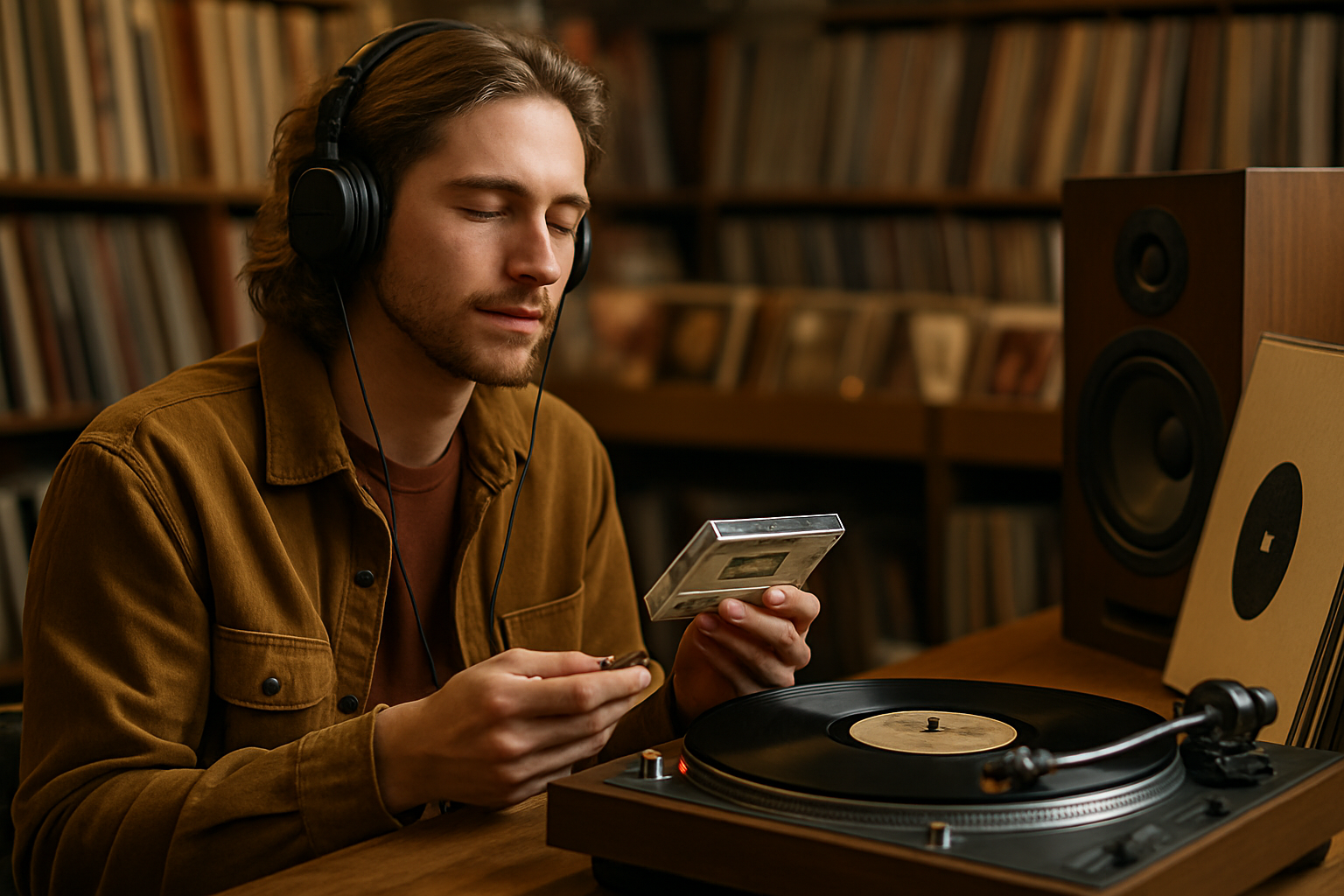Sonic Nostalgia: How Retro Audio Formats Are Reshaping Modern Music Culture
The resurgence of vinyl records and cassette tapes has become more than just a fleeting trend. This unexpected revival is reshaping modern music culture, influencing both artists and listeners alike. From the warm crackle of a vinyl record to the satisfying click of a cassette tape, these analog formats are carving out a significant niche in our digital world. Read below to explore how this sonic nostalgia is impacting the music industry, consumer behavior, and our relationship with music consumption.

The Vinyl Revival: More Than Just Nostalgia
The vinyl revival began as a niche movement among audiophiles and collectors but has since exploded into a mainstream phenomenon. In 2020, vinyl sales surpassed CD sales for the first time since the 1980s, marking a significant shift in consumer preferences. This resurgence isn’t limited to older generations seeking to relive their youth; millennials and Gen Z listeners are embracing vinyl in droves, attracted by its tangible nature and perceived superior sound quality.
The appeal of vinyl extends beyond its audio characteristics. In an era of digital abundance, where millions of songs are available at the tap of a screen, vinyl offers a more intentional and immersive listening experience. The act of carefully selecting a record, placing it on the turntable, and flipping it halfway through creates a ritual that many find deeply satisfying. This physical interaction with music fosters a deeper connection between listener and artist, encouraging active rather than passive consumption.
Cassette Tapes: The Unexpected Comeback Kid
While vinyl’s resurgence might have been predictable, the return of cassette tapes caught many by surprise. Once considered obsolete, cassettes are experiencing a renaissance, particularly in indie and alternative music scenes. The National Audio Company, one of the largest cassette manufacturers in the U.S., reported a 20% increase in sales in 2019, with demand continuing to grow.
The cassette revival is driven by a combination of factors. For artists, cassettes offer an affordable way to release physical media, with lower production costs than vinyl. For listeners, the format provides a nostalgic connection to the past and a unique aesthetic experience. The limitations of cassettes - their lo-fi sound quality and the inability to easily skip tracks - are being embraced as features rather than bugs, offering a counterpoint to the polished perfection of digital audio.
The Impact on Music Production and Distribution
The resurgence of analog formats is influencing how music is produced, mixed, and mastered. Many artists are now creating music with vinyl in mind, considering how their songs will sound on this medium. This has led to a renewed focus on dynamics and warmth in production, moving away from the loudness war that characterized much of digital music production in the early 2000s.
Distribution models are also evolving to accommodate this trend. Record stores, once on the brink of extinction, are experiencing a revival. Online platforms like Bandcamp have embraced the vinyl trend, offering artists the ability to press records on demand. Major streaming services like Spotify have even begun integrating vinyl sales into their platforms, recognizing the growing demand for physical media among their users.
The Sociological Implications of Analog Revival
The return to analog formats reflects broader societal trends and shifting values. In an age of digital overload, there’s a growing desire for authenticity and tangibility. Vinyl records and cassettes offer a physical connection to music that digital formats can’t replicate. This trend aligns with other movements towards slower, more mindful consumption across various aspects of life, from slow food to digital detoxing.
Moreover, the revival of these formats is fostering new communities and social interactions. Record stores are becoming cultural hubs, hosting listening parties and live performances. Vinyl collectors gather at record fairs, sharing their passion and knowledge. These physical spaces and events provide a counterpoint to the often-isolated nature of digital music consumption, creating opportunities for face-to-face connections among music enthusiasts.
Looking to the Future: Coexistence of Digital and Analog
As we look to the future, it’s clear that the resurgence of analog formats isn’t about replacing digital music but rather complementing it. The convenience and vast selection of streaming services will continue to dominate everyday listening habits. However, vinyl and cassettes are carving out a special place in music culture, offering a different kind of listening experience - one that’s more intentional, tactile, and communal.
This coexistence of digital and analog reflects a broader trend in modern society - the desire to balance technological advancement with human connection and sensory experience. As we continue to navigate an increasingly digital world, the enduring appeal of analog formats reminds us of the importance of physical engagement and the timeless power of music to bring people together.





